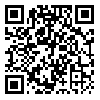Introduction: Toxoplasma gondii (T. gondii) is distributed worldwide and infects most species. The serious incidence and severe or fatal injury caused by T. gondii infection clearly indicates the necessity for the event of a vaccine. The current study goals were to evaluate serological applications of Toxoplasma gondiirhoptry protein 1 (ROP1) antigen.
Materials and methods: We created a polymer vaccine by using the eukaryotic plasmid, pROP1. Purification by one-step metal affinity chromatography allowed recovery of milligram amounts of purified recombinant proteins per liter of culture. The quality of this matter for diagnosing of human infections was provided and tested on 77 serum samples which were obtained during routine diagnostic tests. A panel of 20 serum samples from patients with acute toxoplasmosis was compared to a panel of 35 serum samples from individuals with chronic toxoplasmosis.
Results: Results of the study indicated that antibodies detected from patients with acute and chronic infections were 96% and 17%, respectively, by using of pROP1 recombinant antigen.
Conclusion: According to the present study an immunoglobulin G antibody against ROP1 antigen is made throughout the acute stage of toxoplasmosis infection, but not in the chronic phase of toxoplasmosis.
Received: 2016/06/3 | Accepted: 2016/09/25 | Published: 2017/03/9
| Rights and permissions | |
 |
This work is licensed under a Creative Commons Attribution-NonCommercial 4.0 International License. |



